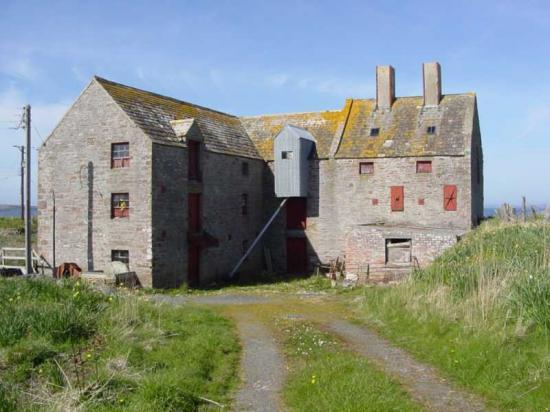John O’Groats Mill to benefit from Historic Scotland Building Repair Grant
15th February 2013

John O’Groats Mill in Caithness is to receive a Historic Scotland Building Repair Grant of £221,316.
It is one of six historic sites in Scotland to benefit from this latest round of funding totalling £587,049.
The Mill was originally built as a threshing mill in 1750 and was rebuilt in 1901 as a corn mill. Between the 16th and 19th centuries, Caithness was known for its corn production and exported meal to ports across Scotland and the rest of Europe.
The site is a key example of industrial heritage in the area and is believed to be the last mill in Caithness to retain its working machinery
The Building Repair Grant scheme makes financial help available to property owners to meet the cost of high-quality repairs using traditional materials and specialist craftsman to conserve original features in buildings of special architectural or historic interest. In return, owners must maintain the building and allow some access to visitors.
Fiona Hyslop, Cabinet Secretary for Culture and External Affairs said: “It is essential that we maintain our historic Scottish buildings which form such a key part of our streetscape and also attract tourists from around the world.
“We have such a variety of fascinating buildings which all contribute to our heritage and we need to ensure that we preserve them for future generations to enjoy and also learn about their past.”
Pauline Megson, Projects Adviser for The Prince’s Regeneration Trust (PRT)) said: “The PRT is working with the North Highland Initiative and the local community in John O’Groats to restore the mill to working order and create a landmark visitor attraction in Caithness. We are delighted to receive the grant offer from Historic Scotland, which will make a significant contribution to the necessary repair of this important building. This will help secure the future of the mill for the enjoyment of locals and tourists alike.”
Other grant recipients include:
Crichton Memorial Church, Dumfries £175,528
Crichton Memorial Church, Dumfries, is a late 19th century cathedral style church, and was designed as part of the Crichton Lunatic Asylum.
Theatre Royal, Dumfries £ 24,624
This is the oldest theatre in use in Scotland and an extremely rare survival of an 18th century theatre, with connections to Robert Burns. Designed by local architect Thomas Boyd in 1790 – 2, and apparently modelled after the Theatre Royal in Bristol, the original building was a simple rectangular structure with a gabled front and a classical portico. This was a relatively standard pattern – for example the Theatre Royal in Edinburgh of 1869 was a more decorated version of the same.
Georgian theatres are extremely rare in Scotland and even in Britain.
St. Fillan’s Mill, Killin, Stirling £ 38,703
This is very unusual in Scotland as it is a 19th century mill built in a romantic decorative style. Sited at the water’s edge next to the Bridge of Dochart, just off the main street, it is built on the site of a succession of grain mills which date back to ancient times.
Alexandra Suspension Bridge, Tain £ 50,000
The Alexandra Suspension Bridge is an important decorative, wire-rope suspension bridge, the work of Rose Street Foundry Inverness 1902, the most important Highlands engineering foundry:
Roseburn House, Edinburgh £ 76,878
Roseburn House is a tower house dating back to 1582. It is believed that there may have been an earlier house on the site as many interesting carved stones are incorporated into the walls. It is an important example of a multi-period mansion house with significant early fabric in its 16th century tower



